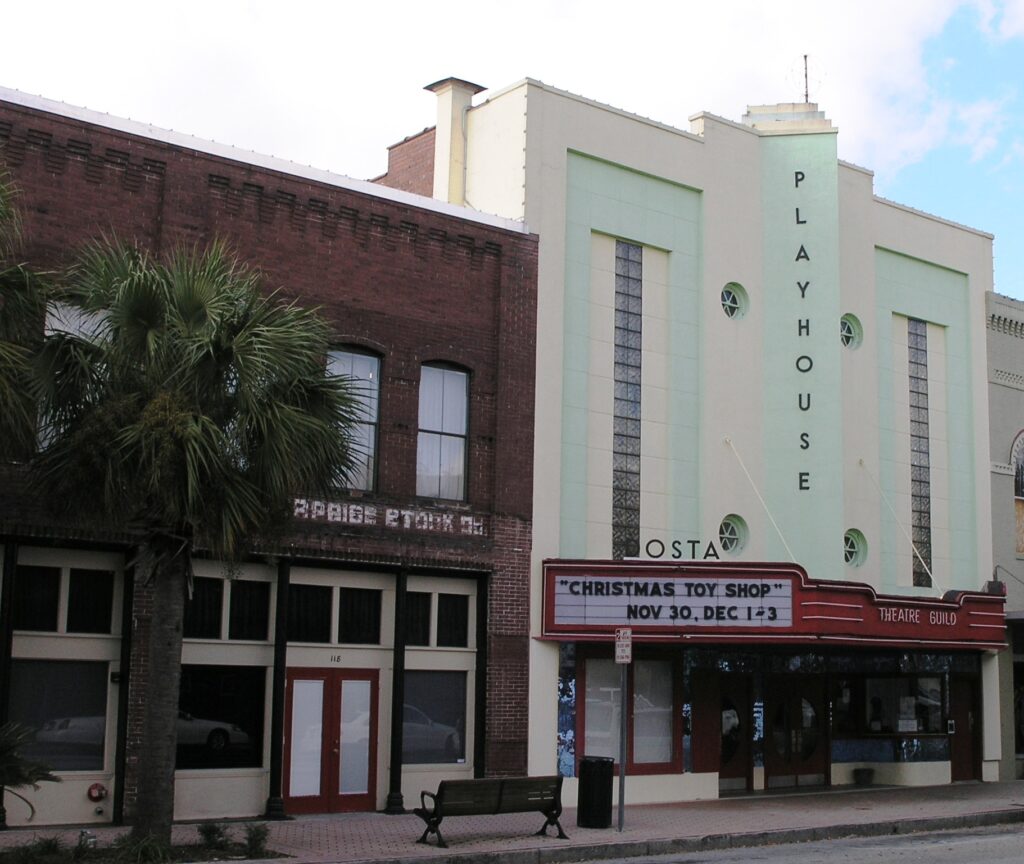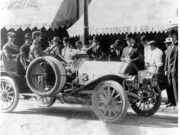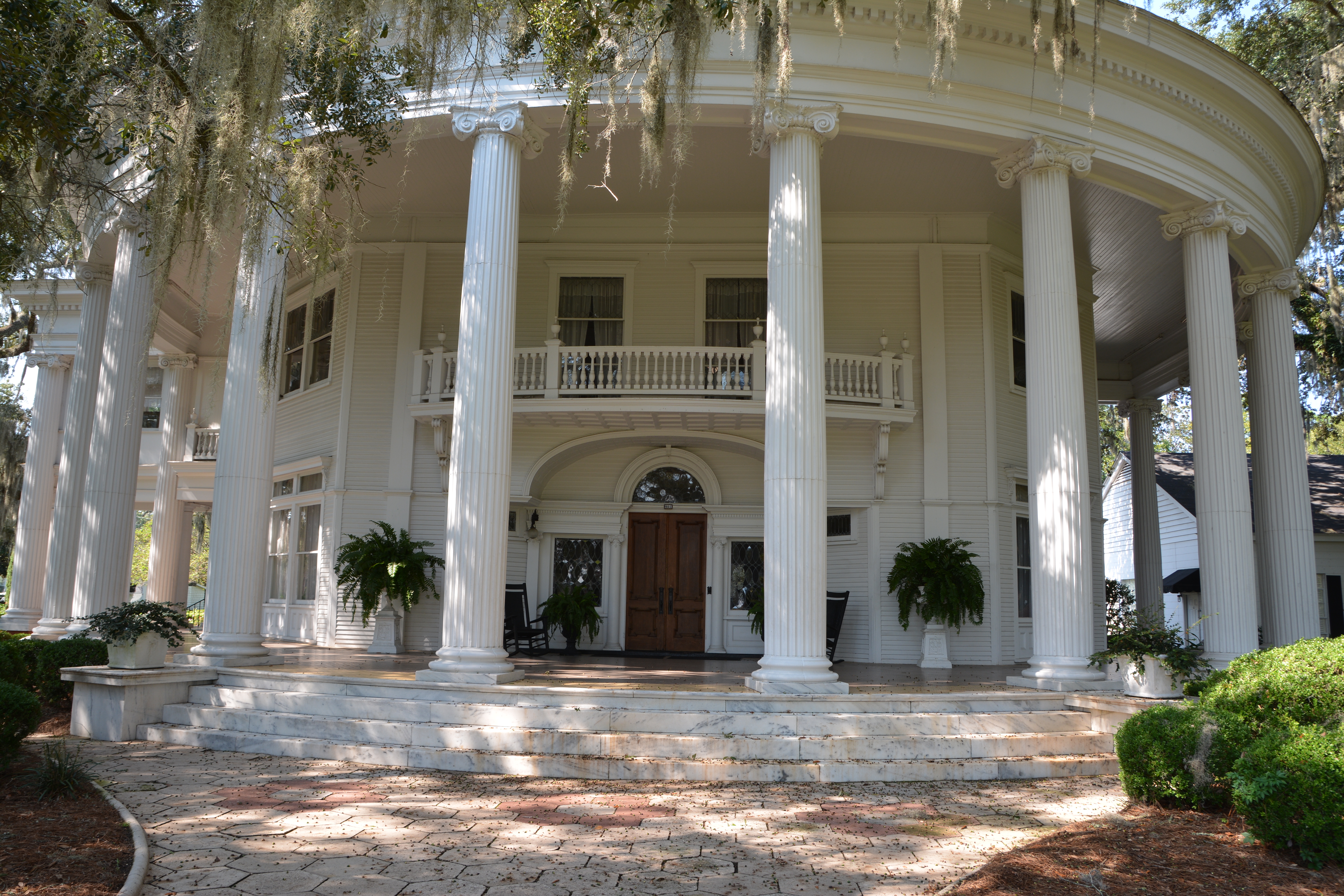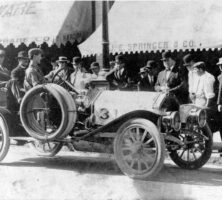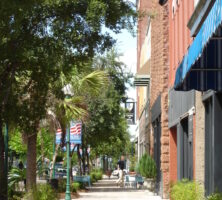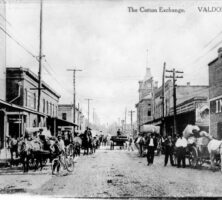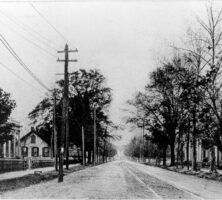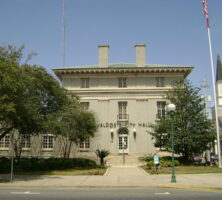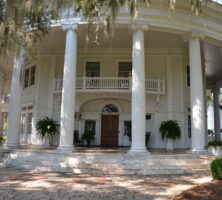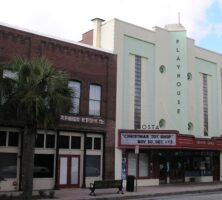Valdosta, the seat of Lowndes County, is situated in south Georgia twenty miles from the Florida border. The city is located along Interstate 75, a major north-south artery, approximately midway between Atlanta and Tampa, Florida. Valdosta’s population, according to the 2020 U.S. census, is 55,378, making it Georgia’s seventeenth largest city.
The hub of a metropolitan statistical area, Valdosta is the retail center for nine counties in south Georgia and north Florida, with $1.5 billion in sales in 2003. Much of Valdosta’s extensive industry is located in the Azalea City Industrial Park; its leading employers, however, are Moody Air Force Base, South Georgia Medical Center, and Valdosta State University.
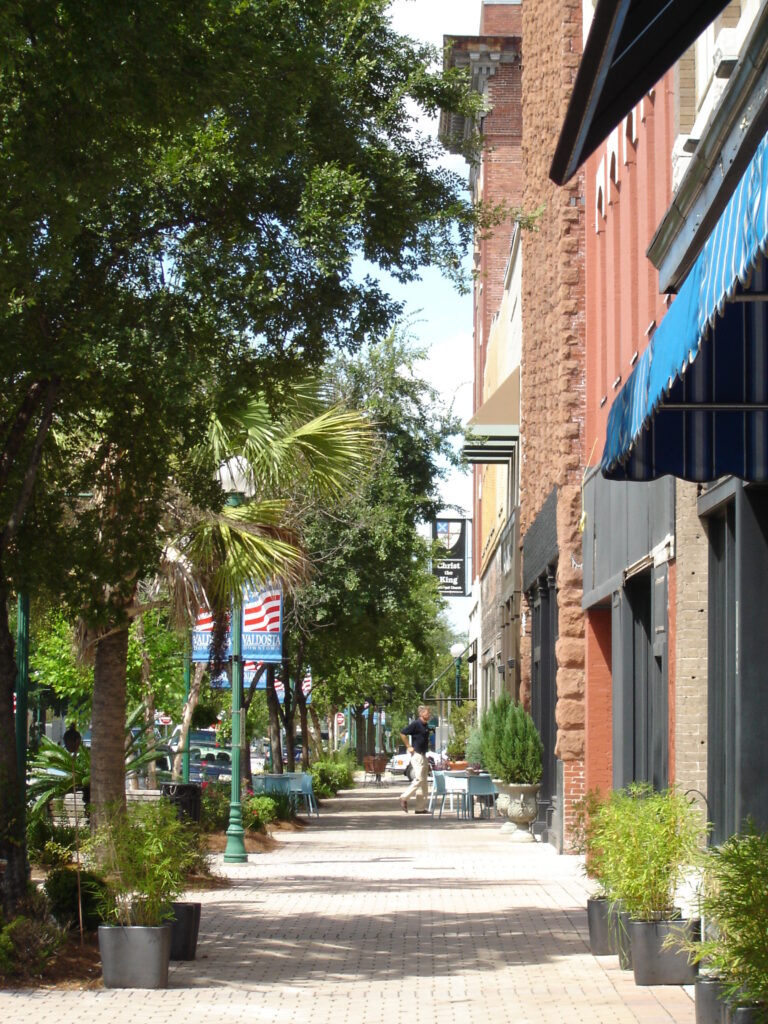
Valdosta exists because of the construction of the Atlantic and Gulf Railroad across south Georgia in the 1850s. The route ran four miles south of the former Lowndes County seat of Troupville. Consequently, county residents urged the state legislature to create a new county seat on the rail line. In 1859 the state legislature appointed four commissioners to select a site, and they subsequently bought 140 acres of land from William Wisenbaker. The town was incorporated in December 1860 and named for Val d’Aosta, a plantation owned by former governor George Troup. The Atlantic and Gulf’s first train reached Valdosta on July 4, 1860.
Nineteenth Century
During the Civil War (1861-65) no fighting occurred locally, but the conflict significantly affected the town. Valdosta contributed men to the Confederate army and took in war refugees. The Union’s naval blockade made most consumer goods impossible to obtain, and those that were available commanded grossly inflated prices. Valdosta became isolated when William T. Sherman’s troops uprooted miles of Atlantic and Gulf’s tracks west of Savannah during his march to the sea in November 1864. Rail service did not resume until March 1866. Valdosta, wrote Louis E. Schmier, a local historian, was at war’s end “little more than an insignificant 'pine hamlet’ in a state of total disrepair.”
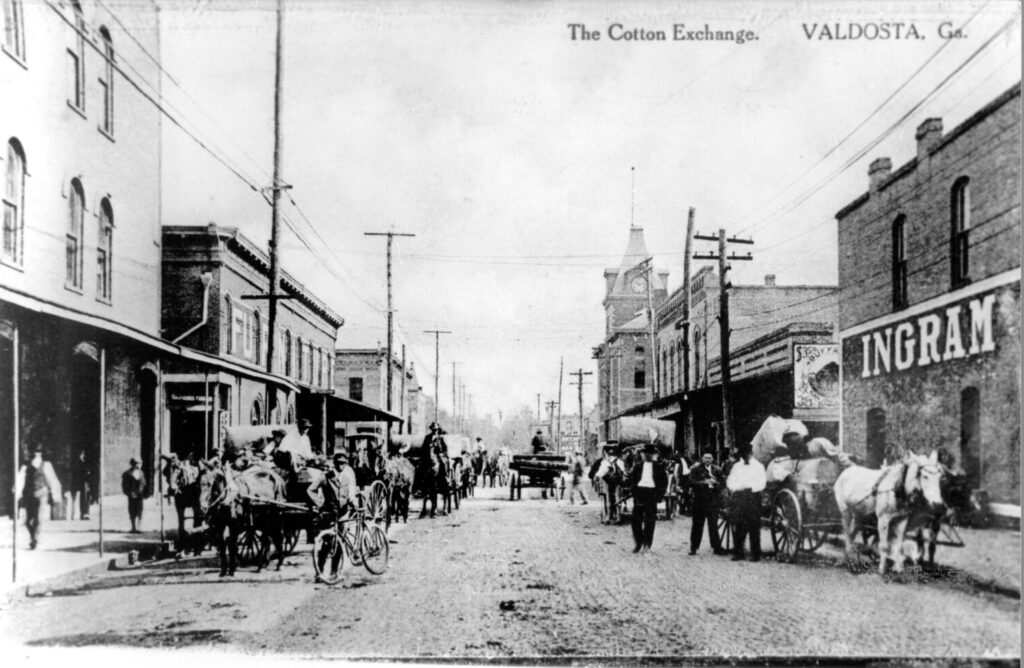
The postwar economy was feeble until the 1880s, when Sea Island long-staple cotton became widely cultivated in Lowndes County. Valdosta became a major inland market for the crop. In 1889 the Georgia Southern and Florida Railroad arrived, consummating a long campaign by town leaders to gain a north-south rail link. Economic conditions improved sufficiently that in 1900 Valdosta held a state fair, which seemed to mark the end of the long economic travail. Some claimed at this time that Valdosta had made the transition from town to city, and dramatic growth continued to take place. Between 1890 and 1900 the population increased more than 90 percent, reaching 5,613 in 1900. The population increased 36 percent from 1900 to 1910, to a total of 7,656.
Twentieth Century
Notable changes occurred during those years of growth, including installation of electric street lights, construction of a water and sewerage system, and inauguration of telephone service. The police department grew, the fire department became professionalized, and a city school system was created. South Georgia State Normal College (later Valdosta State University) commenced classes in 1913. A Carnegie library was built, as was an opera house, the present county courthouse, and a federal building that now serves as city hall. Three more railroads reached Valdosta, and a street railway company began carrying passengers and operated until the Great Depression of the 1930s.
Following World War I (1917-18), city leaders launched new efforts to attract non-agricultural industry to Valdosta. They hoped both to liberate the city’s business community from outright dependence on the farm economy and to promote the new business of tourism. Valdosta was included on the new National Road, the so-called Dixie Highway (later U.S. Highway 41), which linked Chicago, Illinois, with Miami, Florida. The flourishing tourist trade became a major business by the mid-1920s and partially relieved the economic pressure caused by persistent agricultural depression. Tourism remained a significant aspect of the economy, particularly with the opening of Interstate 75 in the 1960s.
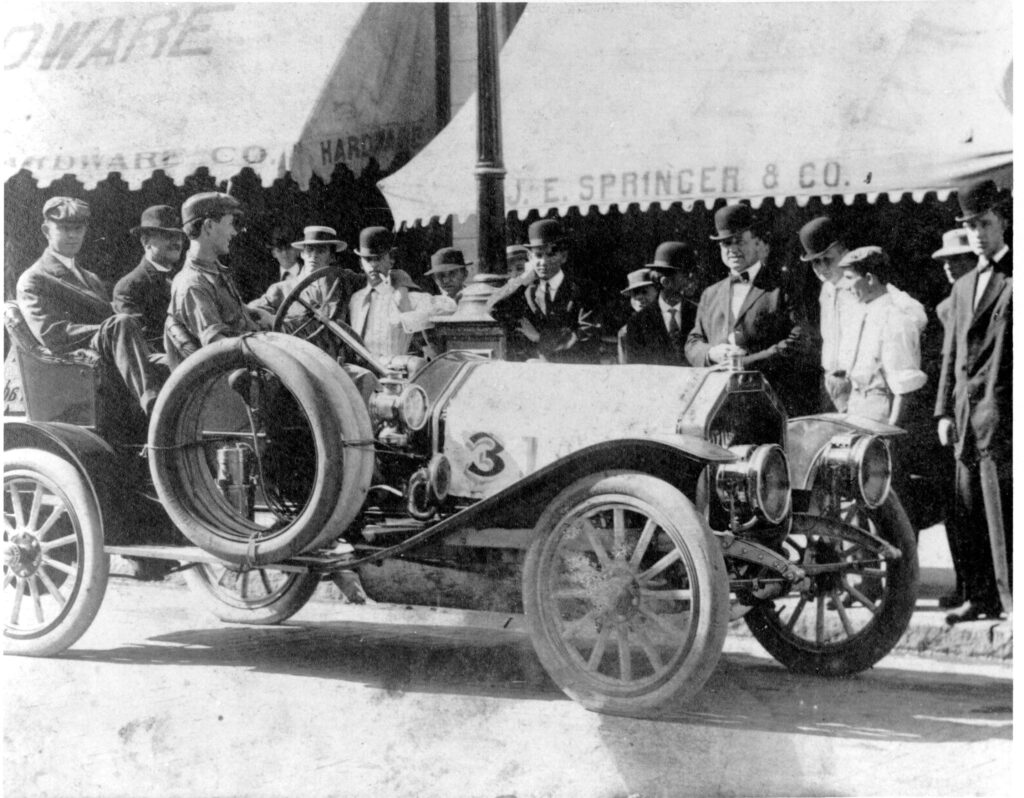
The Great Depression brought hard times again, which were relieved only when World War II (1941-45) generated a new economic boom with the creation of Moody Field (later Moody Air Force Base) north of town. The base arguably was the major factor in local economic growth and continues to be the largest local employer.
Valdosta State University, with an enrollment of 10,547 in fall 2003 and a faculty of more than 400, exerts a major influence on the community as well. The administrative campus for Wiregrass Georgia Technical College is located in Valdosta; the college provides education and workforce training for eleven counties.
Arts and Culture
Valdosta has twenty-seven public parks and a major amusement park called Wild Adventures. The Grand Bay Wetland Education Center offers an interpretive experience of the Grand Bay Wildlife Management Area, which includes the 18,000-acre Grand Bay/Banks Lake ecosystem, the second largest ecosystem in the state (after the Okefenokee Swamp). Restored historic buildings include the Barber-Pittman House, which houses the headquarters of the Chamber of Commerce; the former Carnegie library, which houses the Lowndes County Historical Society and Museum; the Converse-Dalton-Ferrell House; and the Crescent, a Neoclassical structure owned by the Garden Clubs. Valdosta has four National Register Historic districts: Fairview, Valdosta Commercial Historic District, North Patterson Street, and Brookwood North.
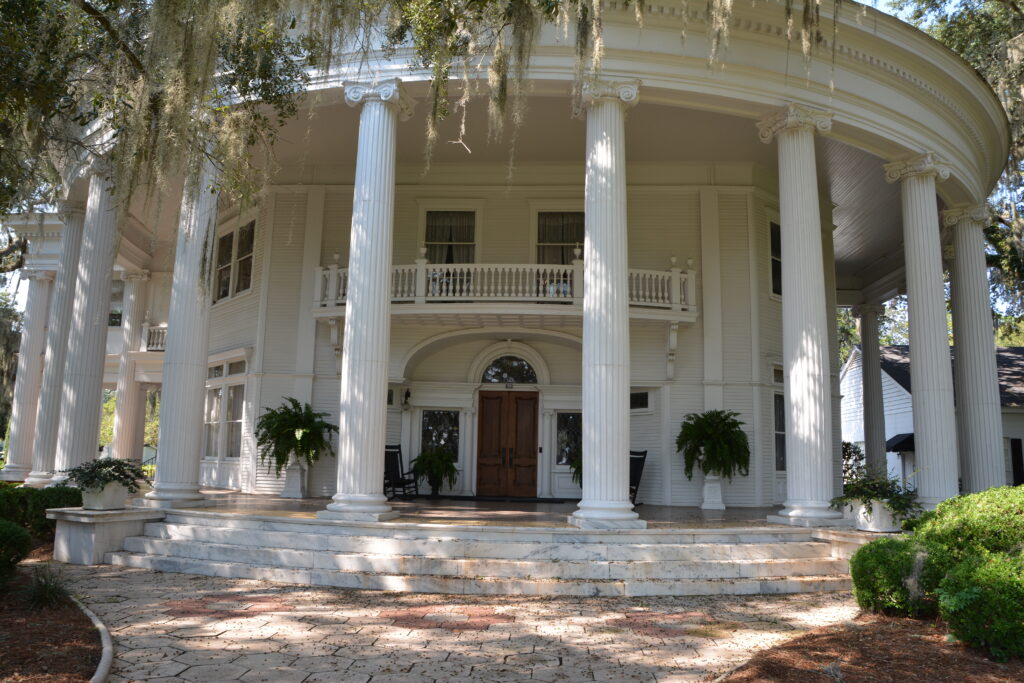
The Lowndes/Valdosta Arts Commission operates the Annette Howell Turner Center for the Arts, presents exhibits in its galleries, and offers performing arts programs. Valdosta State University maintains a fine arts gallery open to the public and mounts frequent exhibits. ArtSouth, Valdosta State University’s arts outreach program, serves forty-six counties in Georgia and north Florida. The Valdosta Symphony Orchestra offers six concerts yearly, while the Valdosta State University Theater stages a wide range of productions between September and May. The Theatre Guild Valdosta performs plays throughout the year in the 'Dosta Playhouse, a former movie theater that opened downtown in 1941.
